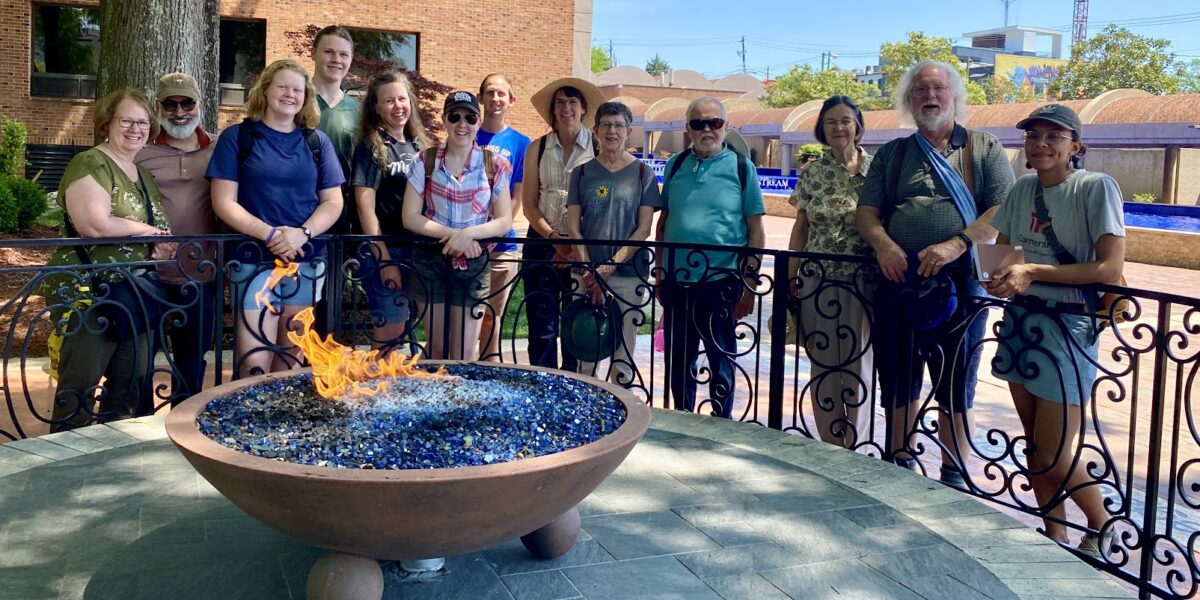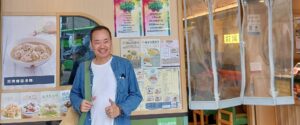Jennifer Murch participated in the Just Peace Pilgrimage Civil Rights Learning Tour in April 2023. Her thoughts are broken down into several blogs, spanning all seven days of the tour. Read days one and two here, day three here, day four here, day five here, and days six and seven here
Just Peace Pilgrimages are group learning experiences through Mennonite Mission Network. For more information about upcoming pilgrimages, click here.
Driving home. Photo by Jennifer Murch.
Do not be dismayed by the
brokenness of the world.
All things break.
And all things can be mended.
Not with time, as they say,
but with intention.
— L.R. Knost, award-winning author and social activist
***
It’s been two weeks since we returned, but I’m still putting the pieces together.
Just the other day my husband said, "Do you think it was intentional that they structured the EJI (Equal Justice Initiative) museum so you felt like you couldn’t escape?"
And only then did I catch on to the planners’ subtle brilliance: the place was actually designed to make guests feel trapped, just as our country has trapped Black people — from when they first arrived in chains on the slave ships to how they’re being chained in the jails today — and the museum staff scattered throughout the museum, pointing us toward the exit, mimicked the underground railroad.
***
I’ve never been sure what my place is when it comes to the Black experience. As a White person, how do I fit in? What is my role?
My uncertainty makes me feel awkward and uncomfortable. I worry I’ll do something wrong. I worry I’ll say something stupid or make a fool of myself. I worry I’ll hurt someone.
The not-knowing can be paralyzing.
***
Messy stories are hard to manage. Tidy stories with a villain and hero, a clear conflict, and a neat resolution are so much easier to package. But life isn’t like that. People aren’t like that.
One of the things Pastor Hugh [Hollowell of Open Door Mennonite Church in Jackson, Missississippi] told us is that if something appears simple, then you don’t know the whole story. I’ve been thinking about that a lot: how we tweak truth and ignore facts — sometimes willfully — simply because it’s easier.
I think the experience of the messiness was the biggest gift I got from that week. Time after time I was welcomed into the complicated mess. I was trusted with the stories and as I listened, I’d sometimes find myself crying, not because the story was heartbreaking but because I was being included.
I think it’s called grace.
***
A long time ago I came across a chart illustrating the appropriate channels of communication when relating to someone who is grieving: a series of circles with the grieving person in the center and everyone else radiating outward in ever larger circles, with the people more intimately connected to the central person in the inner rings and the people less connected in the outer rings.
The rules for communication are as follows: People can process their grief with other people in the same ring, or with people in the outer rings, but the reverse of this is not true.
In other words, it’s unhelpful and inappropriate for people in the outer rings to confide their pain to those in the inner rings. Why? Because people on the inside are already struggling enough. They do not need the additional burden of the grief of those in the outer rings.
I think of this "communication flow" whenever I’m dealing with situations that I don’t understand firsthand, like infertility, disability, divorce, etc. If I’m not in the inner circle — if the pain is not mine — then my job is to listen to those in the inner circles without attempting to troubleshoot or fix, or to console them by sharing my own sadness. Because when I’m with them, my pain isn’t the point.
It’s not a perfect tool, I realize, and the rings aren’t always obvious, but it’s a start.
I’ll take it.
***
Right before we left on our trip, I learned that our group was supposed to be in charge of our church’s worship service two Sundays after we got back.
I didn’t give it much thought at first, but just a couple days into the trip, I knew I wouldn’t be able to participate: there was no way I’d be able to wrap my head around what I was learning fast enough and well enough to share it in any meaningful sort of way, nor did I feel that it was even my place — at least not yet.
Instead, I needed to let go of any pressure to turn my experience and the information I was learning into a tidy little lesson for other people. For that week, I needed to simply be present. To listen to the people. To feel the weight of their stories. To let the pain wash over me and seep into my body.
To be uncomfortable and confused.
To be sad.
To be.
***
My daughter-in-law, the only person of color in our group, spoke that Sunday morning, though. She spoke masterfully, with piercing insight and vulnerability.
***
That morning in the sharing time, another member of our congregation shared about a friend of his who lives in our county and has a Black child, and who gets letters in his mailbox from someone who identifies as the Ku Klux Klan.
"So this is still in the communities that we occupy," my friend said, his voice breaking, "but it’s hidden from most of us."
And that’s when I realized that, right there, was exactly the reason I’d decided to go on the tour in the first place: to learn to see the things that are usually hidden from me.










